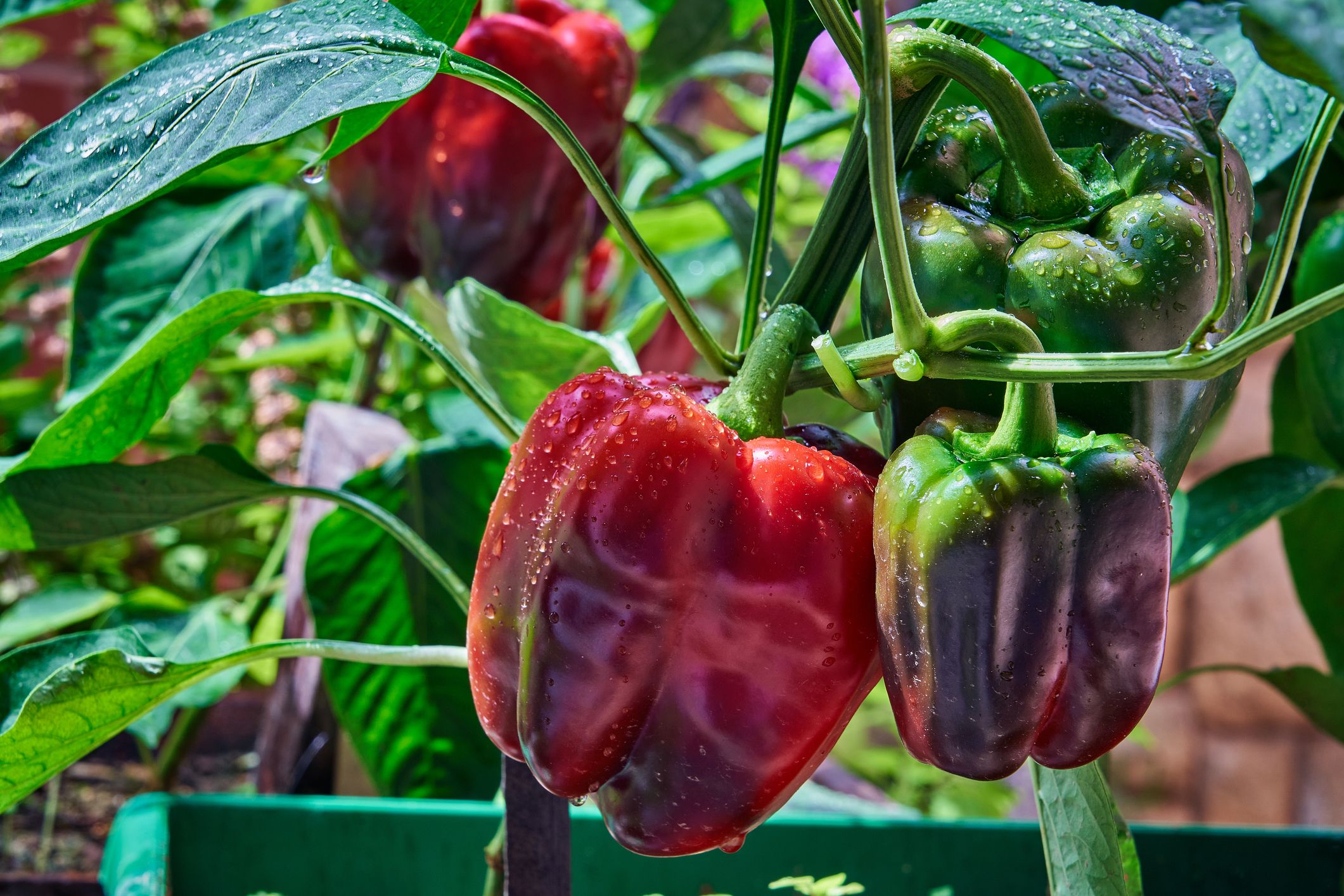By Barbara Pleasant | July 16, 2024
Don’t Leave Your Pepper Plants to Chance
Pepper growers fall into two categories: those who’ve seen their plants topple in a storm and those who eventually will. Protecting your crop is essential, and the best way to do so is by providing reliable support through staking or using cages. Not only does this safeguard your peppers against wind damage, but it also boosts yield, improves fruit quality, and minimizes fruit loss due to rot or pests from soil contact. Supported plants remain productive longer and offer peace of mind during stormy weather.
The Benefits of Staking Pepper Plants
Peppers come in a range of growth habits—some are upright, while others are bushy or sprawling. Most garden varieties belong to Capsicum annuum and grow upright, while types like C. chinense and C. baccatum are bushier.
To determine how your pepper plant will grow, observe its structure as it begins producing its second set of fruits. This is also the ideal time to install stakes or cages. Waiting too long makes it harder to provide adequate support as the plant becomes top-heavy with maturing fruit.

Staking offers several advantages:
- Enhanced Yield and Quality: Prevents limb breakage and keeps fruits off the ground.
- Efficient Space Use: Makes the garden neater and easier to navigate.
- Reduced Disease Risk: Minimizes soil contact, decreasing the likelihood of rots or pest infestations.
Growing Peppers in Tomato Cages
Large-fruited peppers like bell peppers thrive in tomato cages, especially those made with sturdy, heavy-gauge wire. Smaller peppers, such as cayennes, can fit comfortably in lightweight cages.
To maximize space and efficiency, some gardeners plant three to four peppers around a single tomato cage. The plants are tied to the cage as they grow, and the center of the cage can be used to hold compost or provide slow irrigation with water jugs.
For windy areas, reinforcing tomato cages with an upright stake adds stability. Experiments show that staked cages hold firm during storms, while regular cages often need repairs, and unsupported plants can be a total loss.

Best Practices for Tying Peppers to Supports
Because pepper plants are naturally brittle, it’s crucial to use ties that are flexible and gentle. Some excellent options include:
- Jute Twine: Compostable and eco-friendly.
- Fabric Strips: Recycled from old T-shirts, they stretch without constraining growth.
- Elastic Bands: Strung between stakes, they accommodate bushy pepper varieties.
Avoid tight materials like wire or rigid plastic clips, as these can damage the plant. Instead, loosely tie branches so they lean against their support while retaining some natural movement.
Adjust Support as Plants Grow
As peppers load up with ripening fruit, individual branches may require additional ties. Fully ripened red peppers not only taste better but also pack twice the vitamin C and 11 times more beta carotene than their green counterparts.
Each growing season brings surprises, especially with new pepper varieties. Over time, you’ll gain insights into the specific support needs of your favorite plants, helping you deliver optimal care and secure a bountiful harvest.
By staking or using cages, you’re ensuring your peppers stay upright, healthy, and productive, allowing you to enjoy the rewards of your hard work well into the season. Don’t gamble—invest in these simple methods to protect your pepper plants!
